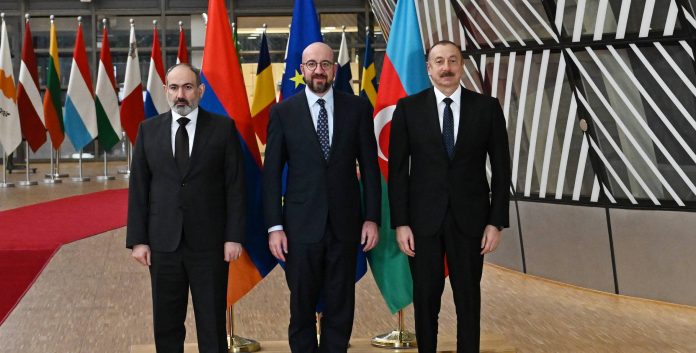The negotiation process between Armenia and Azerbaijan has shown a recurring pattern in recent years. Each year begins with hope for a peace agreement, but talks typically stumble before reaching a conclusion. This was true in 2024, which began with optimism but ended without a resolution. A joint declaration in December 2023 between the two nations set a positive tone. Armenia supported Azerbaijan’s bid to host the COP29 climate summit, while Azerbaijan released 32 Armenian prisoners of war. The summit became an informal deadline for achieving a peace agreement.
Progress and obstacles
Between March and May 2024, Armenia and Azerbaijan made a breakthrough. They began delimiting and demarcating a 12.7-kilometre stretch of the border for the first time since 1991. However, Azerbaijani threats of force overshadowed the process, making it difficult to maintain optimism. In October, Armenia ratified a framework for the delimitation commission, which Azerbaijan also accepted.
Germany and the United States played a significant role in facilitating talks. German Chancellor Angela Merkel hosted a leaders’ meeting at the Munich Security Conference. Later, foreign ministers from both countries met in Berlin. In the US, Secretary of State Antony Blinken organised two meetings between the foreign ministers of Armenia and Azerbaijan in July and September. Michael Carpenter, senior assistant to the US president, also visited both countries in October to deliver a message from President Joe Biden urging both sides to sign a peace agreement by the end of 2024.
Key moments of diplomacy
The most significant diplomatic moment of 2024 occurred during the BRICS summit in Kazan, Russia. Armenian and Azerbaijani presidents held talks, and Prime Minister Nikol Pashinyan described the discussions as “quite positive.”
Despite these steps, key obstacles remained. On November 4, 2024, just before the COP29 summit, Farid Shafiyev, chairman of Azerbaijan’s Centre for International Relations, mentioned that three issues still needed resolution: territorial claims in Armenia’s Constitution regarding Karabakh, international legal disputes, and the deployment of third-party forces along the Armenia-Azerbaijan border.
Azerbaijan’s preconditions and COP29
Early in 2024, President Ilham Aliyev set additional demands. He insisted Armenia formally request the dissolution of the OSCE Minsk Group and argued for unrestricted Azerbaijani access to Nakhchivan through Armenia, known as the “Zangezur corridor.” These issues remained unresolved.
Despite significant diplomatic activity, no agreement was reached during or before COP29. Armenia did not send a delegation to the event, reportedly because Azerbaijan had not agreed to release more prisoners of war.
A year of progress, not failure
Though a peace agreement did not materialise, Prime Minister Pashinyan remained optimistic. On December 4, 2024, he stated that 90% of the text had been agreed upon and expressed hope for intensified talks. Armenia’s foreign minister also confirmed that the preamble and 15 of the 17 articles of the peace agreement were ready.
As 2024 ended, it was clear Armenia and Azerbaijan would likely enter 2025 without a final peace deal, unless a major breakthrough occurred. While this outcome might appear disappointing, it should not be seen as a failure. The year marked the first without a major escalation since 2020. Previous years had seen incursions into Armenia by Azerbaijani forces in 2021, a major escalation in 2022, and the operation against Nagorno-Karabakh in 2023, which led to significant displacement and violence.
A shift towards calm
In contrast to previous years, 2024 saw limited conflict. The most significant incident occurred in February, when violence erupted near the village of Nerkin Hand in Armenia’s Syunik region, resulting in the deaths of four Armenian soldiers. Several factors contributed to the overall calm, including Iran’s opposition to border changes, Armenia’s withdrawal from contested areas, the hosting of COP29, and the EU’s monitoring mission.
While no peace agreement was reached, the lack of major incidents represents progress. This year marked a shift away from large-scale conflict.
Uncertain prospects for 2025
Some of the stabilising factors of 2024 may not carry over into 2025. COP29 has concluded, and Iran’s ability to influence the region may decrease due to increasing tensions in the Middle East. These changing dynamics could alter the situation in the South Caucasus, creating more uncertainty.
Regional stakeholders must continue to prioritise stability in the South Caucasus. They need to send a clear message that any further escalation will not be tolerated. Such efforts will be crucial to preventing 2025 from becoming a year of setbacks in Armenia-Azerbaijan relations.
